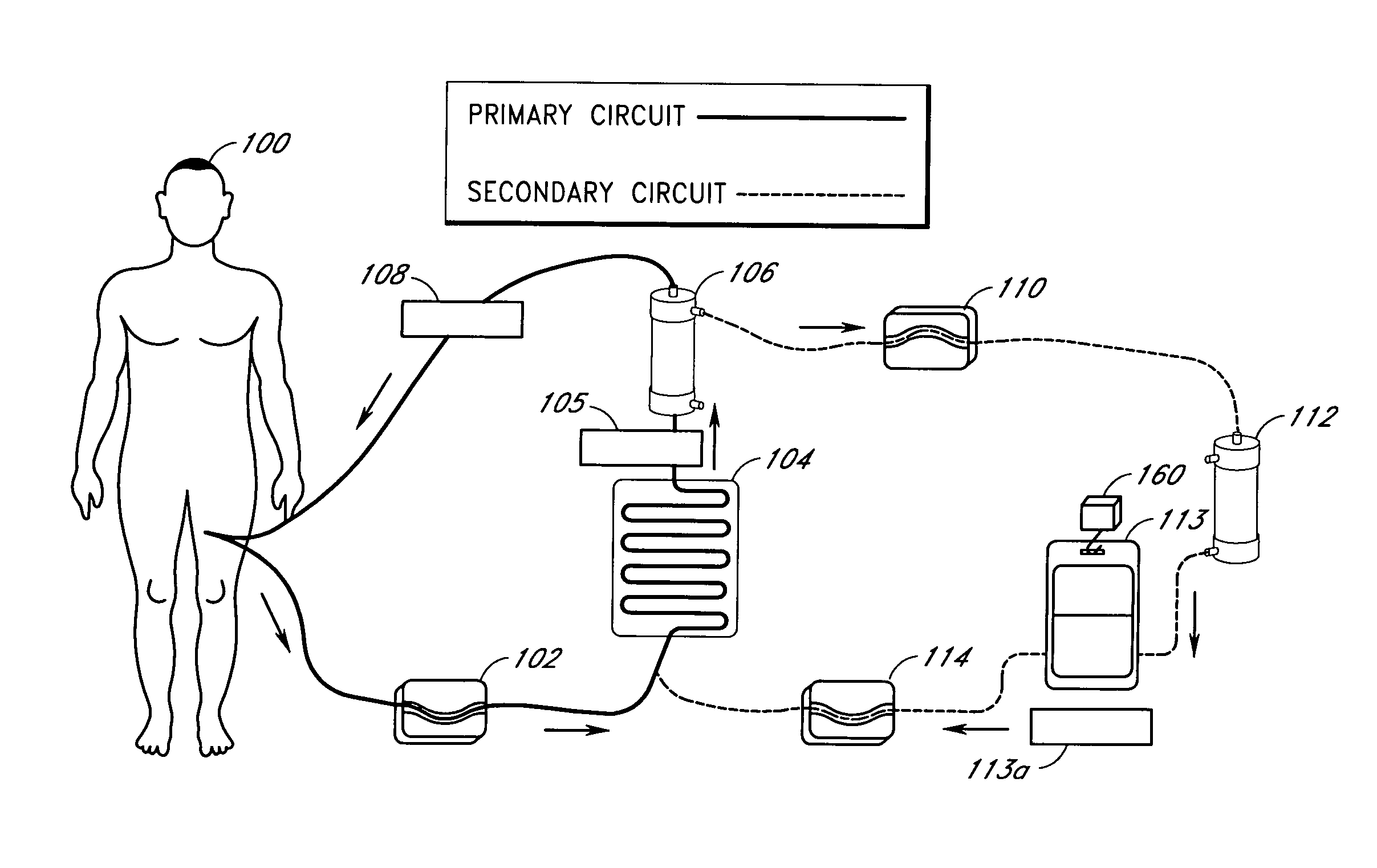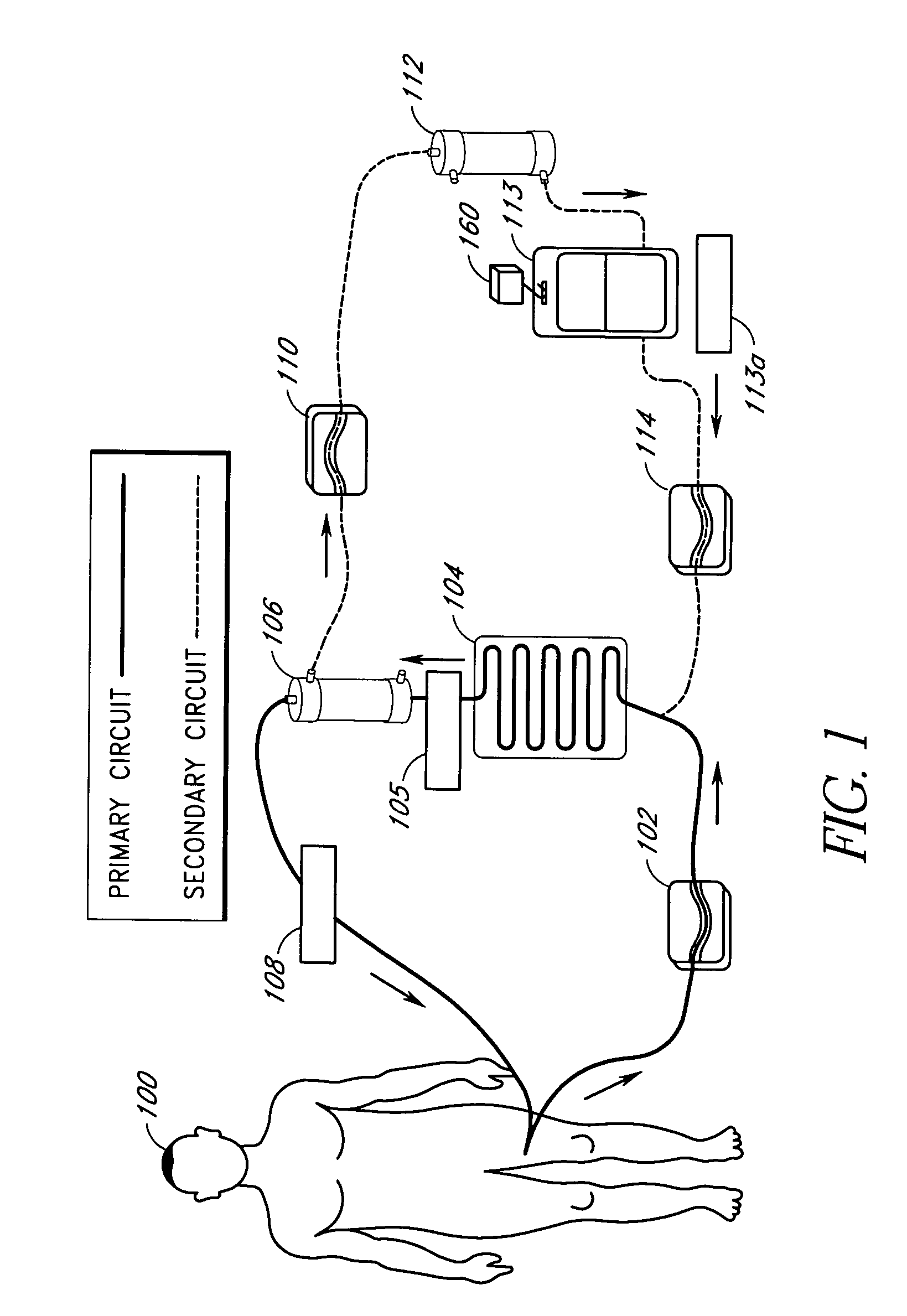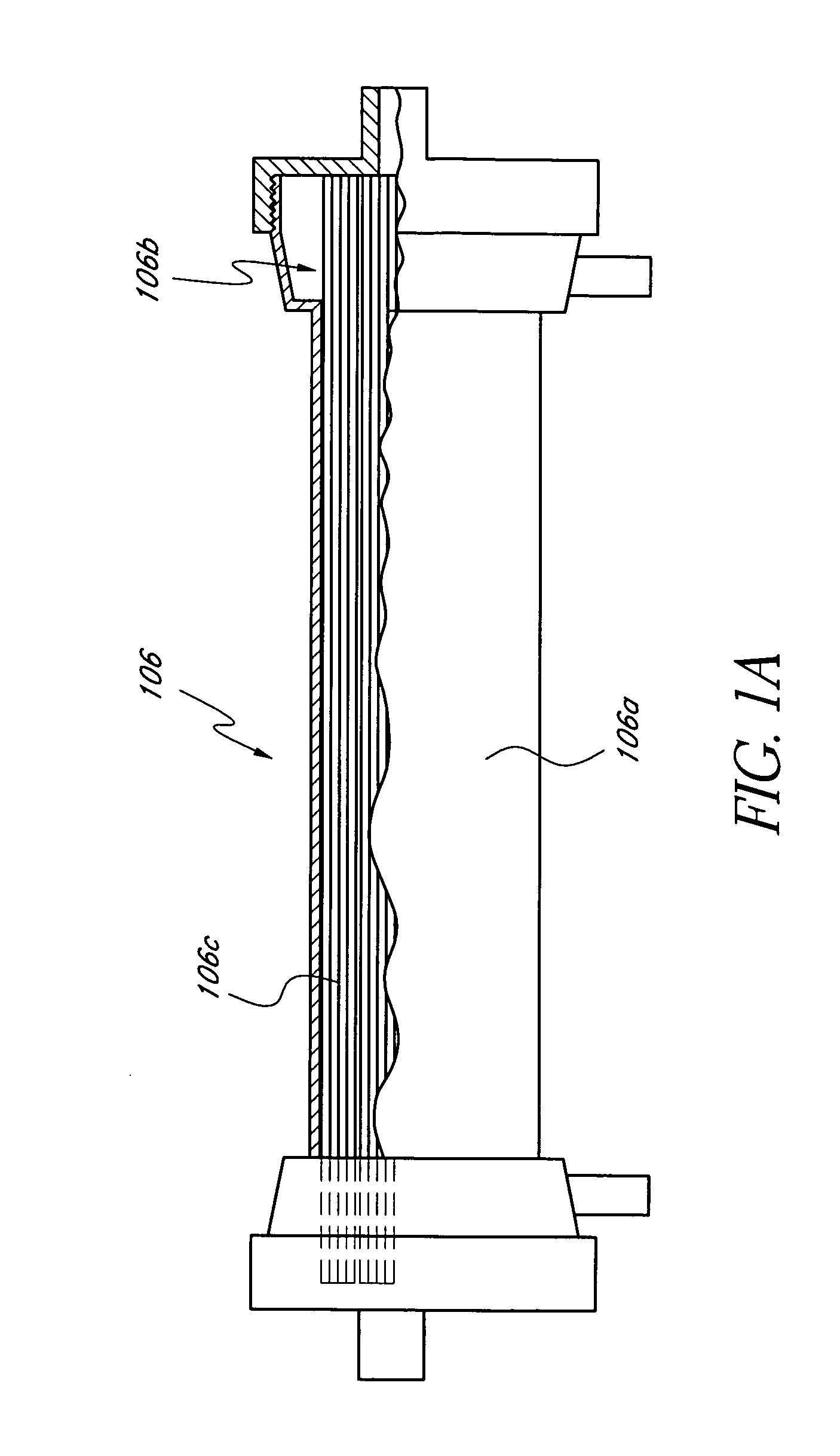Extracorporeal blood treatment system using ultraviolet light and filters
a treatment system and extracorporeal technology, applied in water installations, disinfection, construction, etc., can solve problems such as multiple organ and system failure, hypotension varying degrees, dysfunction syndrome, etc., to prevent over-pressure of irradiator bags and optimize ultraviolet output of bulbs
- Summary
- Abstract
- Description
- Claims
- Application Information
AI Technical Summary
Benefits of technology
Problems solved by technology
Method used
Image
Examples
example 1
The HemaCharge Device
[0093] In one embodiment of the current invention, shown in FIG. 13, an embodiment referred to as “the HemaCharge device” is provided. In this embodiment, the system comprises three pumps (blood pump 1302, diluent pump 1304, and hemoconcentrator pump 1306), an ultraviolet irradiator lamp assembly 1308 and a load cell 1310 to maintain proper hemodilution and hemoconcentration of patient blood. The user interface is a backlit LCD touch screen display 1312. The device also incorporates clamps, a bubble detector, pressure sensors, temperature sensors, a UV sensor, as well as visual and audible alarms for patient safety. A power supply module is provided containing an isolation transformer, a solid-state electronic ballast, and associated electronics to produce about 5-24 VDC to power the pumps, clamps, and sensors. A strain gauge beam type load cell is provided to measure the weight of the diluent bag. A 70-90 kD polysulfone hollow fiber filter 1314 used for hemoco...
example 2
In Vitro Studies
[0101] Over one thousand in vitro experiments have been conducted to date using several embodiments of the present invention. Factors investigated included appropriate UV transparent material, hematocrit of blood for optimal UV absorption, ideal blood flow path for adequate UV exposure, ideal UV dosage, ideal pore size of hemofilters, ideal surface area of hemofilters, ideal blood model, development of porcine cytokine assays, various circuit coatings and optimal flow rates.
[0102]FIGS. 8-10 show data from bacterial reduction studies. In one embodiment, a logarithmic base ten reduction (90%) of Staphylococcus aureus (ATCC 6538p) was provided within three hours and in some instances a two logarithmic base ten (99%) reduction within six hours of UV-C exposure. Staph. aureus was selected as the bacterial model because it is one of the most common organisms associated with sepsis and because it is considered one of the most difficult to kill. One skilled in the art will...
example 3
In Vivo Studies
[0105] Over eighty animal studies have been conducted in accordance with several embodiments of the current invention. Variables investigated included appropriate animal models, effects of UV dosage, maintaining a pig under anesthesia for up to 16 hours, ideal flow rates, various circuit coatings, various anticoagulants and various replacement fluids. The cell safety data represents 16 animal trials encompassing four different safety models: Sham, Tubing Control, UV Control and Experimental. All trials were conducted on 50-68 kg SPF Yorkshire pigs anesthetized and in recumbent position. Venous blood supply was obtained by way of a femoral vein cut-down and blood pressure was monitored via the femoral artery. Each subject was monitored for at least one week post-treatment. The following is a brief description of each model:
[0106] In the sham model, a 12 french double lumen catheter was placed in the femoral vein and the subject was monitored for six hours.
[0107] In ...
PUM
 Login to View More
Login to View More Abstract
Description
Claims
Application Information
 Login to View More
Login to View More - R&D
- Intellectual Property
- Life Sciences
- Materials
- Tech Scout
- Unparalleled Data Quality
- Higher Quality Content
- 60% Fewer Hallucinations
Browse by: Latest US Patents, China's latest patents, Technical Efficacy Thesaurus, Application Domain, Technology Topic, Popular Technical Reports.
© 2025 PatSnap. All rights reserved.Legal|Privacy policy|Modern Slavery Act Transparency Statement|Sitemap|About US| Contact US: help@patsnap.com



